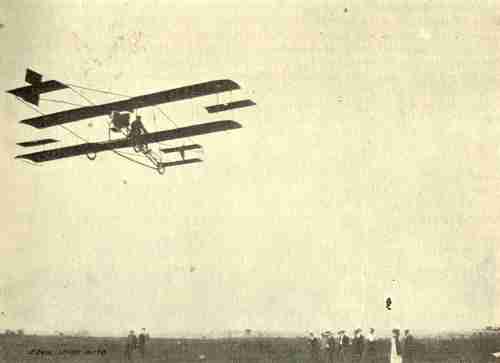
| The Aeronautic Society of New York |
|
Until he obtained the commission to build the Society's machine, Mr. Curtiss had nevere been able to stay many moments in the air, because the air-cooled engines he then used would not hold out their power. It was at Mineola, in the Society's machine, that he really lerned to lfy more than short flights, and acquired the skill that allowed him to compete with the foremost aviators of Europe, and to bring back to America the greatest of the trophies and the right to have the next big international meeting in this country. That this was so; gave the Society the utmost grafification, and will long be treasured in its memory as one of the happiest incidents in, and results of, the Society's work in the year. The fact gave the greater pleasure also because, at the time, Mr. Curtiss had no other machine with which he could pradtice, for it was only by working day and night, down to the very last minute, that his factory was able to turn out the copy of the Sodiety's machine in time for him to get to Rheims, and, in fact, so far from it being used for prac- tice, it had to go over without being even tried out. |
 |
| Photo Edwin Levick, N. Y. |
|
While the machine was at Mineola, two members of the Society were chosen to be taught to handle it. These were Alexander Williams and C. F. Willard. Mr. Willard took the first lesson July 18, 1909, and it proved to be the only one he was to receive. For, unfortunately, Mr. Williams, who followed, met with an accident resulting in a bad fracture of his left arm and considerable damage to the machine. Happily, however, Mr. Williams soon recovered. During his practice at Mineola, Mr. Curtiss' best flight, as to distance, was his record for the Scientific American Trophy, when he flew nineteen times round a circle of a mile and a third in 52 minutes, covering an official distance of 25 3-8 miles, though prob- ably making an actual distance of over 33 miles. Too near the ground in his nineteenth |
|
|